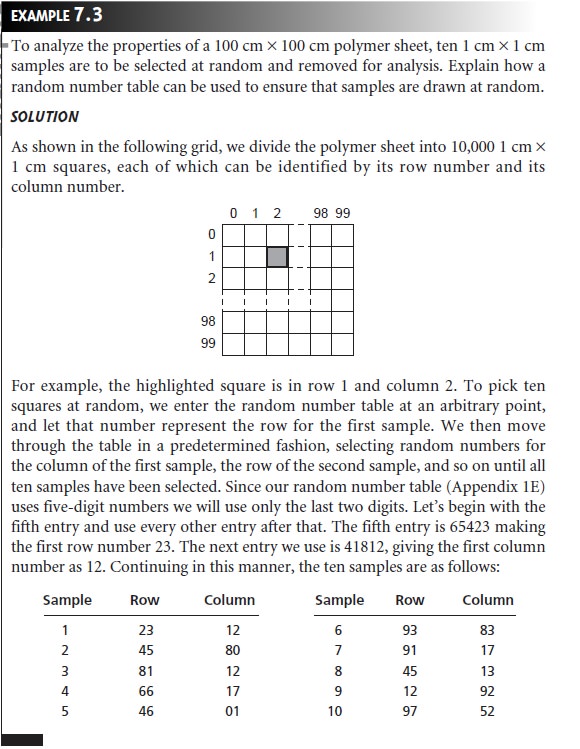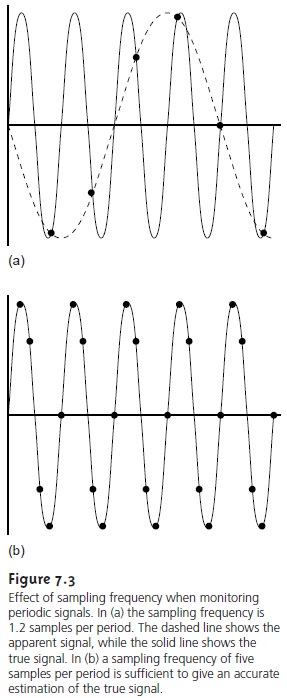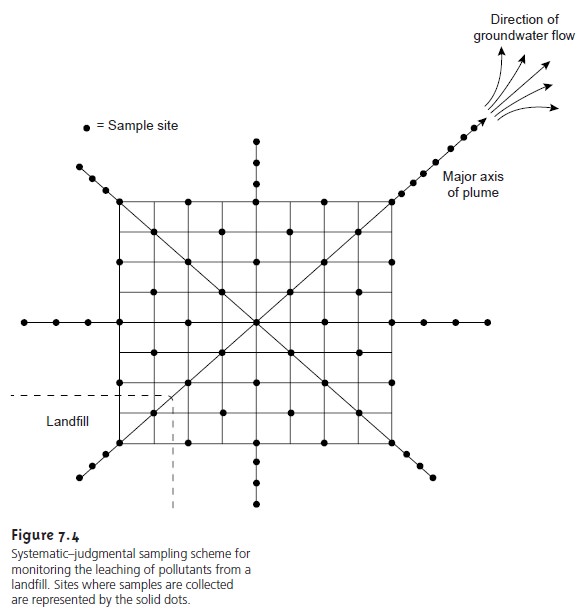Chapter: Modern Analytical Chemistry: Obtaining and Preparing Samples for Analysis
Where to Sample the Target Population
Where to Sample the Target Population
Sampling errors occur
when a sampleŌĆÖs composition is not
identical to that
of the population from which it is drawn.
When the material
being sampled is homoge-
neous, individual samples
can be taken without regard
to possible sampling
errors. Unfortunately, in most situations the target population is heterogeneous in either
time or space. As a result of settling, for example, medications available as oral sus-
pensions may have a higher
concentration of their
active ingredients at the bottom of the container. Before
removing a dose
(sample), the suspension is shaken to min-
imize the effect of this
spatial heterogeneity. Clinical samples, such as blood or urine, frequently show a temporal heterogeneity. A patientŌĆÖs blood glucose level, for
instance, will change
in response to eating, medication, or exercise. Other
systems show both spatial
and temporal heterogeneities. The concentration of dissolved O2 in a lake shows
a temporal heterogeneity due to the change in seasons, whereas point sources of pollution may produce a spatial heterogeneity.
When the target populationŌĆÖs heterogeneity is of concern,
samples must be ac-
quired in a manner that
ensures that determinate sampling errors are
insignificant. If the target
population can be thoroughly homogenized, then samples can
be taken without introducing sampling errors. In most cases,
however, homogenizing the target population is impracticable. Even more important, homogenization destroys
information about the analyteŌĆÖs spatial or temporal distribution within the
target population.
Random Sampling
The ideal sampling
plan provides an unbiased estimate
of the target populationŌĆÖs properties. This requirement is satisfied if the sample
is collected at random from the target population.3 Despite its apparent simplicity, a true ran-
dom sample is difficult to obtain. Haphazard sampling, in which
samples are col- lected without a sampling plan, is not
random and may
reflect an analystŌĆÖs uninten- tional biases. The best method for ensuring
the collection of a random sample is to
divide the target population into equal units,
assign a unique
number to each unit,
and use a random number
table (Appendix 1E) to select
the units from which to sample. Example 7.3 shows
how this is accomplished.

A randomly collected sample makes no assumptions about
the target popula- tion, making it the least biased approach to sampling. On the other hand, random sampling requires more time and expense
than other sampling
methods since a greater number of samples
are needed to characterize the target population.
Judgmental Sampling
The
opposite of random
sampling is selective, or judg- mental sampling, in which
we use available information about the
target popula- tion to help select
samples. Because assumptions about the target
population are included in
the sampling plan, judgmental sampling is more biased than random sampling; however, fewer samples
are required. Judgmental sampling is common when we wish to limit the number of independent variables influencing the re- sults of an analysis. For example, a researcher studying
the bioaccumulation of polychlorinated biphenyls (PCBs) in fish may choose to exclude fish that are too
small or that appear diseased.
Judgmental sampling is also encountered in many protocols in which the sample to be collected is specifically defined
by the regula- tory agency.
Systematic Sampling
Random sampling and judgmental sampling represent ex- tremes in bias and
the number of samples needed
to accurately characterize the tar- get population. Systematic sampling
falls in between
these extremes. In systematic
sampling the target population is sampled at regular intervals in space or time. For a
system exhibiting a spatial heterogeneity, such as the
distribution of dissolved O2 in a lake,
samples can be systematically collected by dividing the system into discrete
units using a two- or three-dimensional grid pattern (Figure
7.2). Samples are collected from
the center of each unit,
or at the intersection of grid
lines. When a heterogeneity is time-dependent, as is common
in clinical studies, samples
are drawn at regular intervals.


When a target
populationŌĆÖs spatial or temporal heterogeneity shows a periodic trend,
a systematic sampling
leads to a significant bias if samples are not collected
frequently enough. This is a common problem when sampling electronic signals, in which case the problem is known as alias-
ing. Consider, for
example, a signal
consisting of a simple sine
wave. Fig- ure 7.3a shows how an insufficient sampling frequency underestimates the signalŌĆÖs true frequency.
According to the Nyquist
theorem, to determine
a periodic signalŌĆÖs
true fre- quency, we must sample
the signal at a rate that is at least
twice its frequency (Fig- ure 7.3b); that is, the signal must be sampled
at least twice
during a single
cycle or period. When samples are collected at an interval
of Ōłåt, the highest frequency that can be accurately monitored has a frequency of (2 Ōłåt)ŌĆō1.
For example, if samples are collected every hour, the highest frequency
that we can monitor is 0.5 hŌĆō1, or a peri-
odic cycle lasting 2 h. A signal
with a cycling
period of less
than 2 h (a frequency of more than 0.5 hŌĆō1) cannot
be monitored. Ideally,
the sampling frequency should be at least
three to four
times that of the highest
frequency signal of interest. Thus,
if an hourly periodic
cycle is of interest, samples
should be collected at least every 15ŌĆō20 min.
SystematicŌĆōJudgmental Sampling
Combinations of the
three primary approaches to sampling are
also possible.4 One such combination is systematicŌĆōjudgmental sampling, which is encountered in environmental studies
when a spatial or tempo-ral
distribution of pollutants is anticipated. For
example, a plume
of waste leaching from a landfill
can reasonably be expected to move in the same di-
rection as the flow of groundwater. The
systematicŌĆōjudgmental sampling
plan shown in Figure 7.4 includes a rectangular grid for systematic sampling and linear transects
extending the sampling along the
plumeŌĆÖs suspected major and minor axes.

Stratified Sampling
Another
combination of the three primary
approaches to sampling is judgmentalŌĆōrandom, or stratified sampling. Many target populations are conveniently subdivided into distinct units,
or strata. For example,
in determining the concentration of particulate
Pb in urban air, the target population can be subdivided by particle size. In
this case samples
can be collected in two ways. In a random sampling,
differences in the
strata are ignored, and individual samples
are collected at random from the entire target population. In a stratified
sampling the target population
is divided into strata, and random samples are collected from
within each stratum. Strata are analyzed
separately, and their respective
means are pooled to give an overall mean for the target population.
The advantage of stratified sampling is that the
composition of each
stra- tum is often
more homogeneous than
that of the
entire target population. When true, the sampling
variance for each stratum is less than that when the
target population is treated as a single
unit. As a result, the overall sampling variance for stratified sampling
is always at least as good as, and often better
than, that obtained by simple
random sampling.
Convenience Sampling
One
additional method
of
sampling
deserves brief mention.
In convenience sampling,
sample sites are selected
using criteria other than minimizing
sampling error and
sampling variance. In a survey of groundwater quality, for example, samples can be collected
by drilling wells at randomly selected sites, or by making use of existing
wells. The latter
method is usually
the preferred choice.
In this case, cost, expedience, and accessibility are the primary factors used in selecting
sam- pling sites.
Related Topics